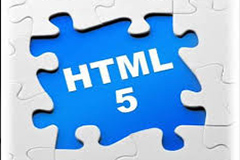Course Overview
HTML5 introduces elements and attributes that reflect typical usage on modern websites. Some of them are semantic replacements for common uses of generic block (<div>) and inline (<span>) elements, for example <nav> (website navigation block), <footer> (usually referring to bottom of web page or to last lines of HTML code), or <audio> and <video> instead of <object>.[30][31][32] Some deprecated elements from HTML 4.01 have been dropped, including purely presentational elements such as <font> and <center>, whose effects have long been superseded by the more capable Cascading Style Sheets.[33] There is also a renewed emphasis on the importance of DOM scripting (e.g., JavaScript) in Web behavior.






